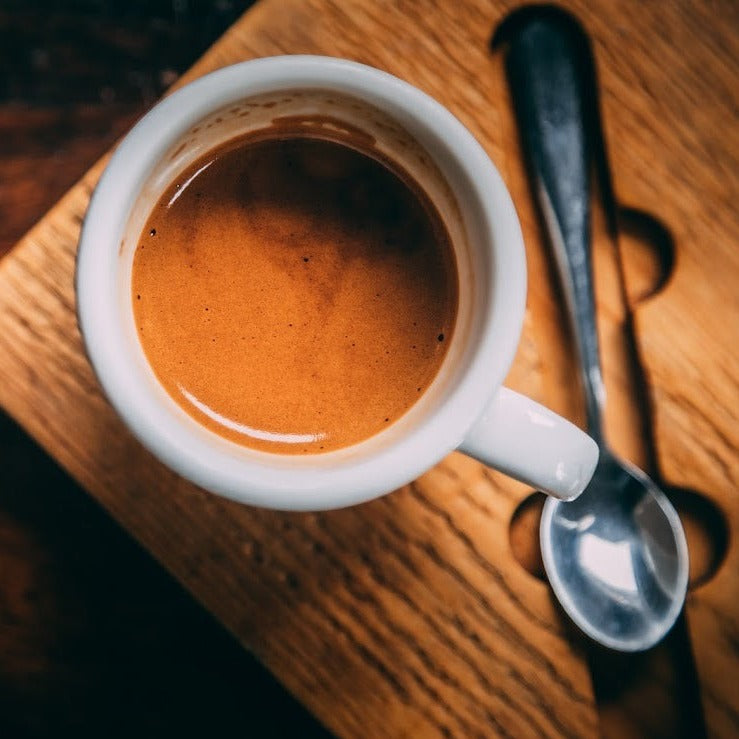What Makes SOE Single Origin Espresso Unique from Mixed Roasts
Discovering the Rich Tastes of Coffee Beans: a Deep Dive Into Espresso and Blended Coffee Beans
When you explore the abundant tastes of coffee beans, you discover an intricate world where each variety brings its own character to your mug. Recognizing the origins, processing approaches, and toasting methods can transform your coffee experience. As you navigate via the art of coffee and the imagination behind blended coffees, you'll begin to value the nuances that make each sip distinct. What you'll find next could alter the means you enjoy your early morning brew.
The Beginnings of Coffee Beans: Exploring Terroir and Flavor Profiles
When you take a sip of coffee, you're not just taking pleasure in a beverage; you're experiencing a rich tapestry of flavors formed by the beans' beginnings. Each area generates special flavor accounts influenced by climate, altitude, and dirt. Beans from Ethiopia commonly burst with brilliant, fruity notes, while those from Colombia often tend to use a balanced, nutty sweet taste.
As you check out different origins, you'll notice just how terroir-- the ecological variables affecting a plant-- plays an important role - Single Origin Espresso. The same coffee variety can taste considerably various depending on where it's expanded
When you consider these variables, you start to value the complexity behind your cup. Each sip narrates of the land and the farmers that nurtured the beans. So, next time you delight, consider the journey your coffee took before it reached your hands, and savor those complex flavors that reflect its origin.
Understanding Espresso: The Art and Scientific Research Behind the Mixture
When you think of coffee, it's not practically the solid flavor; it's also regarding the methods that bring it to life. Recognizing just how various preparation methods effect taste can transform your brewing experience. Let's check out the complexities of coffee prep work and uncover the one-of-a-kind taste profiles that make each cup unique.
Coffee Preparation Techniques
Coffee prep work is both an art and a scientific research, incorporating specific techniques with a deep understanding of coffee. To begin, you'll intend to select premium, freshly baked beans and grind them carefully for optimal extraction (Single Origin Espresso). The work size is important; also crude, and your coffee will be weak, too fine, and it'll be bitter
The result ought to be an abundant, luscious coffee with a stunning layer of crema on top. With practice, you'll master these methods.
Taste Profiles Discussed
The world of espresso uses an abundant tapestry of flavor accounts that can raise your coffee experience. When you take that initial sip, you'll notice an equilibrium of sweet taste, bitterness, and acidity. Each espresso bean brings distinct notes, from fruity and flower to nutty and chocolaty. Light roasts typically display intense level of acidity and vibrant flavors, while dark roasts present much deeper, bolder tones.
A well-crafted blend might balance the bright notes of an Ethiopian bean with the rich, chocolatey undertones of a Brazilian bean. Accept the trip of finding espresso's varied tastes, and you'll transform your coffee ritual right into an exciting experience.
Handling Approaches: How They Influence Flavor and Fragrance
While it could seem that the origin of coffee beans is one of the most substantial consider establishing their taste and aroma, the processing methods utilized post-harvest play a just as necessary role. You'll discover that these methods can considerably alter the final taste profile of your cup.
As an example, the washed process eliminates the fruit from the beans prior to fermentation, often resulting in a cleaner, brighter flavor. Meanwhile, the natural procedure leaves the fruit undamaged throughout drying out, leading to a sweeter, fruitier profile.
Various other techniques, like honey handling, strike a balance, permitting some fruit mucilage to stay, providing an one-of-a-kind intricacy.
Each processing technique connects with the beans' intrinsic features, boosting or silencing details flavors and aromas. When you sip that espresso or mixed coffee, keep in mind that the trip from cherry to cup is influenced not just by origin however additionally by how those beans were processed.
Toasting Strategies: Unlocking the Full Potential of Coffee Beans
Roasting techniques are vital for disclosing the complete potential of coffee beans, as they transform raw, environment-friendly beans into the aromatic, tasty coffee you enjoy. The choice of roasting approach-- light, tool, or dark-- dramatically influences taste accounts.
A slower roast at reduced temperature levels allows for complex tastes to create, while a quicker roast can escalate anger. By mastering these methods, you'll disclose a globe of taste, raising your coffee experience to new heights.
The Magic of Blended Coffee: Developing Special Flavor Experiences
Developing a special flavor experience with blended coffee can change your morning routine right into an exploration of preference. By integrating different beans from numerous areas, you can expose a symphony of tastes that boost your mug to brand-new elevations. Each mix deals a distinctive account, stabilizing level of acidity, sweetness, and body to create something truly unique.
When you pick a blend, you're not just picking a coffee; you're selecting a journey throughout diverse landscapes and cultures. Trying out various mixes allows you to find your individual favorites, whether you take pleasure in fruity notes or rich, chocolatey touches.

Tasting Notes: Recognizing the Nuances in Your Mug
As you drink your coffee, you may discover a range of tastes dancing on your taste buds, each exposing the ins and outs of the beans. You may taste the intense level of acidity reminiscent of citrus or the deep, abundant notes similar to dark chocolate. The sweetness can stimulate honey or sugar, balancing the overall profile perfectly.
Take notice of the body of the coffee-- does it feel airy and light, or is it full and velvety? The surface, as well, supplies clues; a remaining aftertaste might hint at nuttiness or flower undertones.

Do not neglect to discover the special characteristics of different origins, as each region presents distinct tastes - Single Origin Espresso. For example, Ethiopian coffees often present fruity notes, while Colombian beans may display a much more spherical sweet taste. By recognizing these subtleties, you'll deepen your appreciation for each and every mug, raising your coffee experience to new elevations

Brewing Methods: Making The Most Of Taste Removal for each Bean
When you explore the numerous developing methods, you'll discover that each strategy can dramatically influence the taste profile of your coffee. From French press to pour-over, each approach removes various compounds, improving or muting certain notes. For instance, making use of a French press allows oils to remain in the brew, producing a richer preference, while pour-over emphasizes clearness and brightness.
Temperature and grind dimension also play important duties. A coarser grind functions best for cool brews, while a great grind is suitable for espresso. Trying out water temperature-- between 195 ° F and 205 ° F-- can disclose concealed flavors, also.
Do not fail to remember about soaking time; a quick removal can cause sour notes, while over-extraction may produce bitterness. By readjusting these variables, you can optimize flavor removal and truly raise your coffee experience. Delight in the trip of finding what method finest matches your taste buds!
Frequently Asked Inquiries
What Is the Ideal Water Temperature Level for Brewing Coffee?
The ideal water temperature level for brewing coffee's between 195 ° F and 205 ° F. If you use water that's also hot, you'll over-extract tastes; as well cold, and you will not remove sufficient. Go for that sweet place for the finest mixture!
Exactly How Does Work Size Influence Coffee Flavor?
Work size substantially influences coffee flavor. Better grinds extract extra flavors and oils, resulting in a bolder taste, while coarser grinds return a lighter taste. Adjusting grind size aids you achieve your preferred coffee account.
Are There Wellness Advantages Linked With Drinking Coffee?

What Is the Distinction In Between Arabica and Robusta Beans?
Arabica beans are smoother and sweeter, typically including fruity flavors, while robusta beans are stronger with a bitter preference and greater caffeine web content. You'll notice these distinctions in aroma and developing experience.
Exactly How Can I Store Coffee Beans for Freshness?
To save coffee beans for freshness, keep them in an impermeable container, away from wetness, light, and warm. If you only grind what you require right before brewing., you'll keep their flavor longer.
Discovering the Abundant Tastes of Coffee Beans: a Deep Dive Into Espresso and Blended Coffee Beans.
When you explore the abundant flavors of coffee beans, you uncover a complex globe where each selection brings its very own personality to your mug.When you take a sip of coffee, you're not just enjoying a beverage; you're experiencing a rich tapestry click for more info of tastes shaped go to this site by the beans' beginnings.Roasting techniques are vital for revealing the full possibility of coffee beans, as they transform raw, green beans right into the aromatic, savory coffee you delight in.As you sip your coffee, you could discover a spectrum of tastes dancing on your taste buds, each exposing the complexities of the beans.